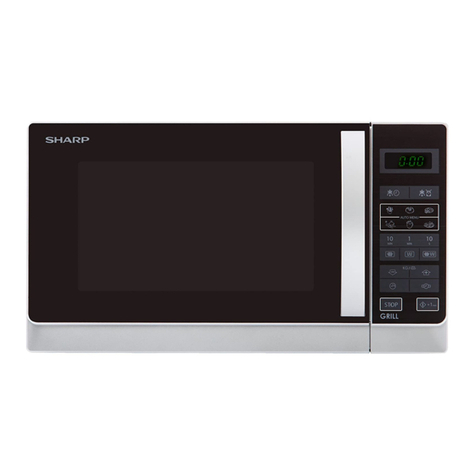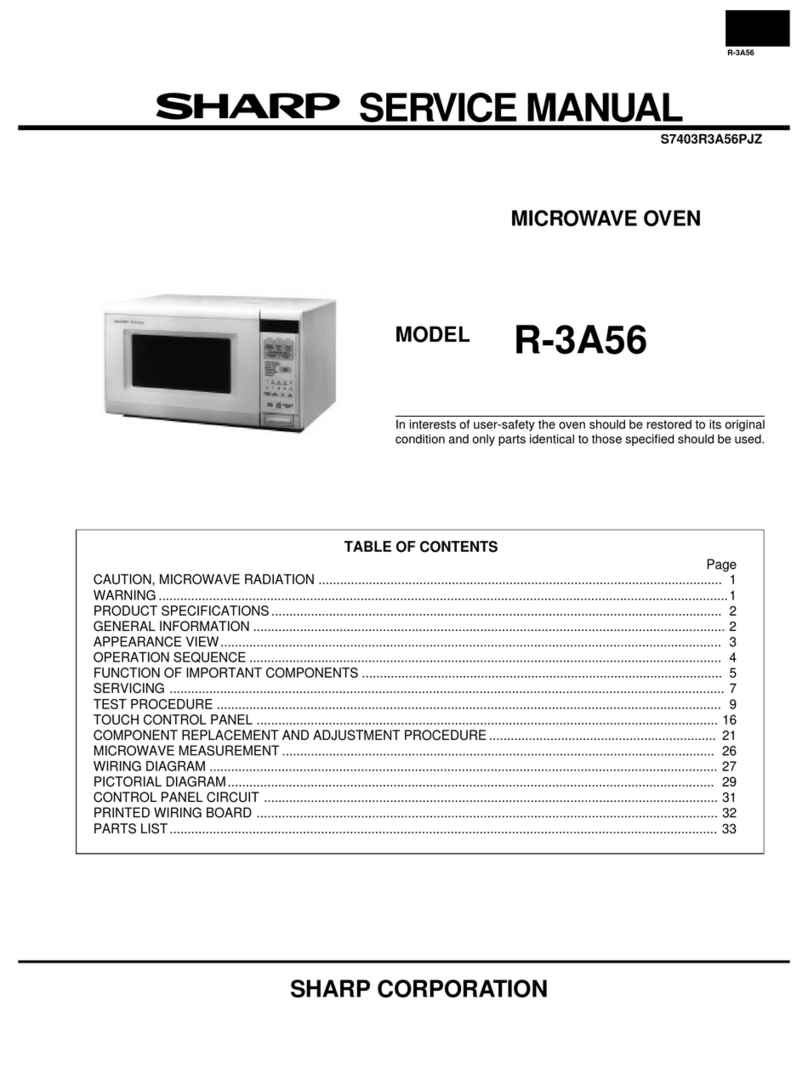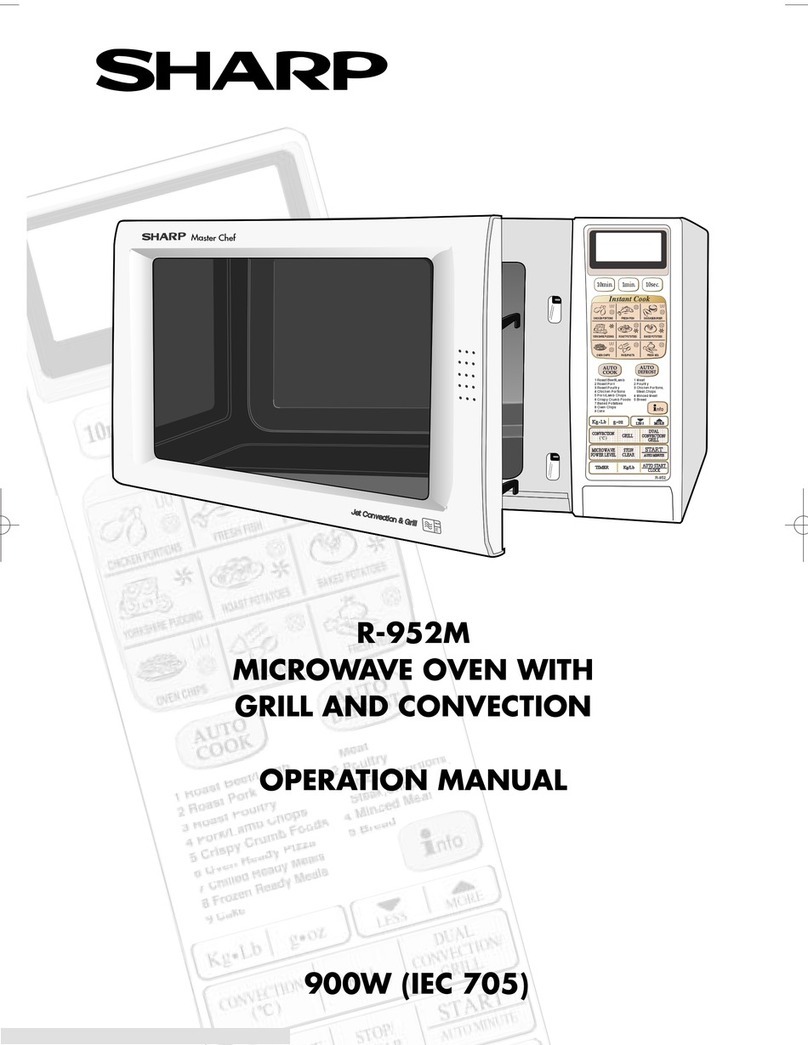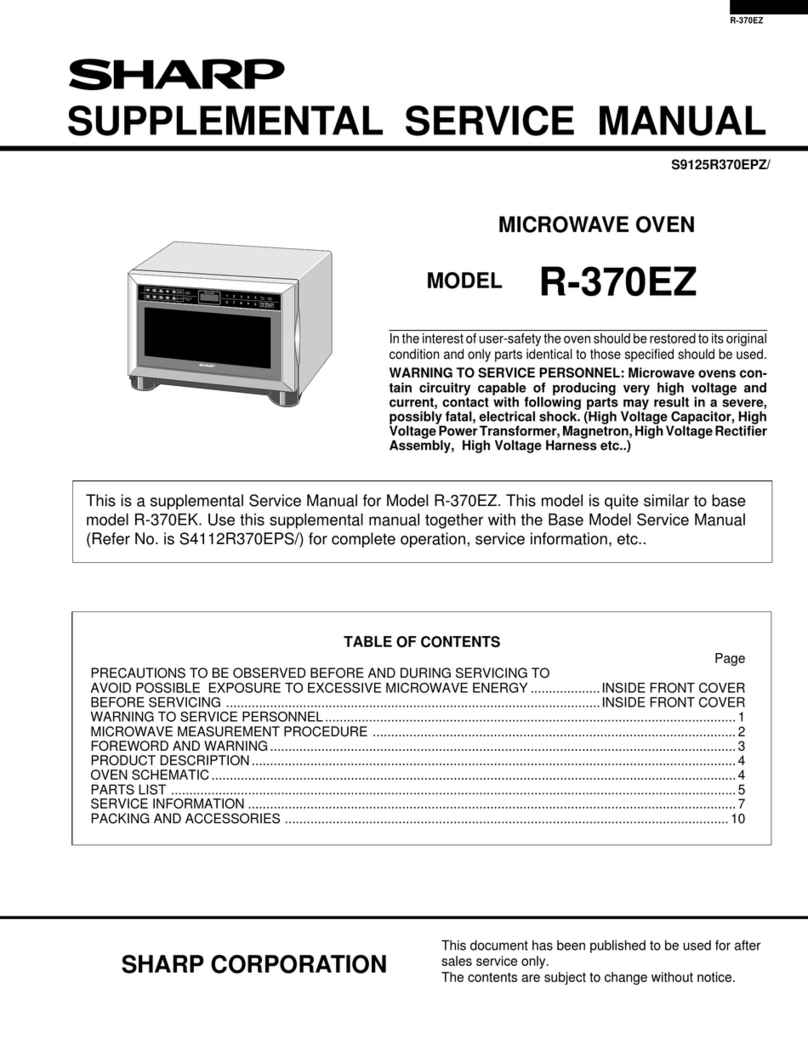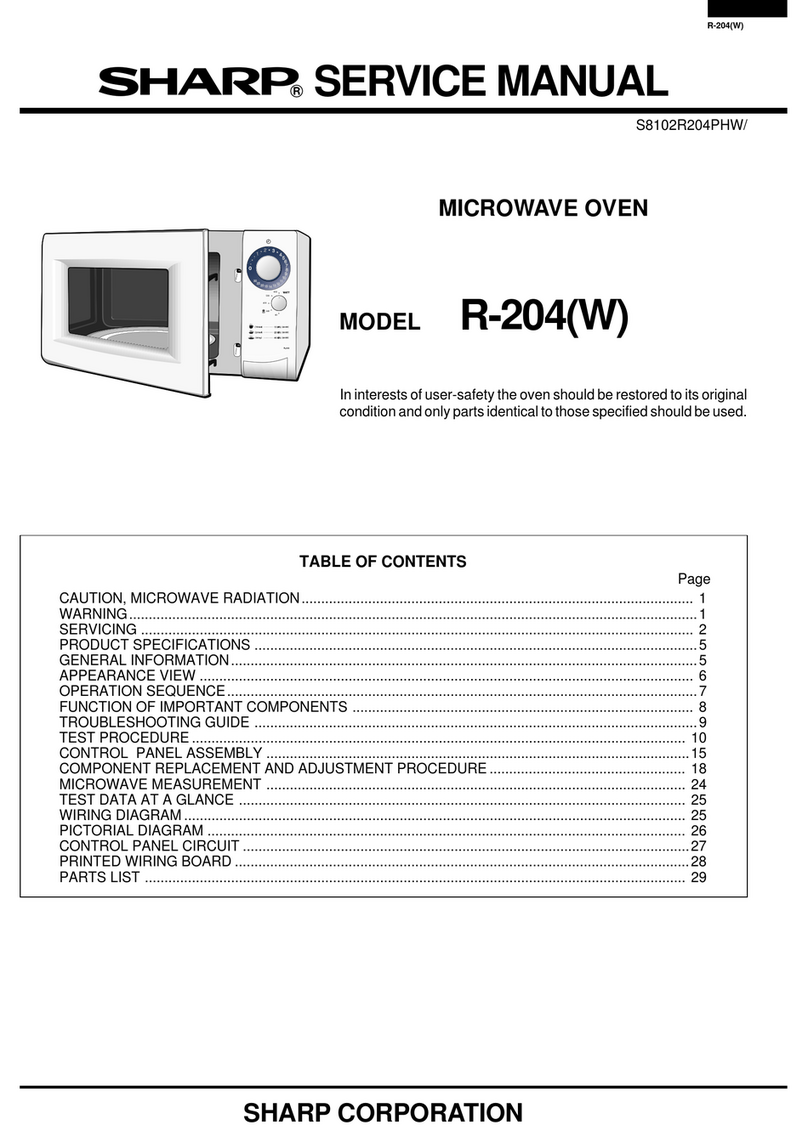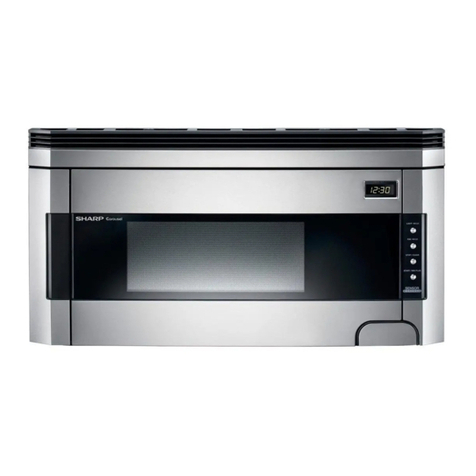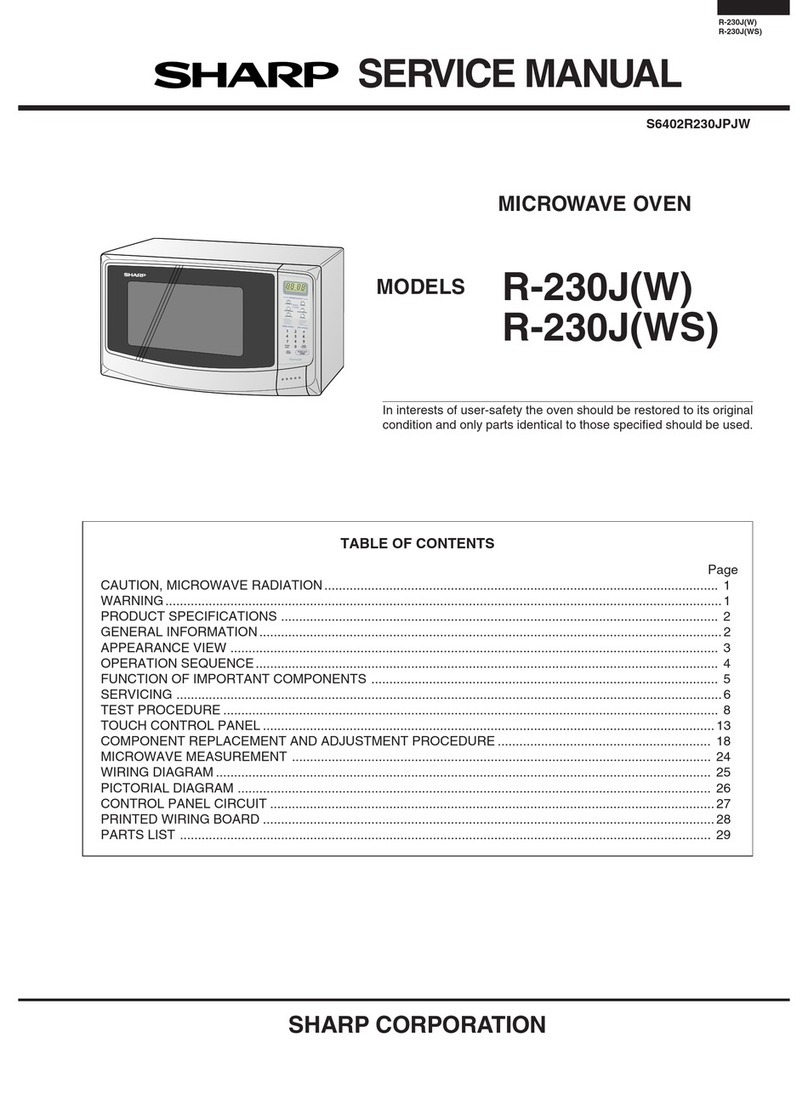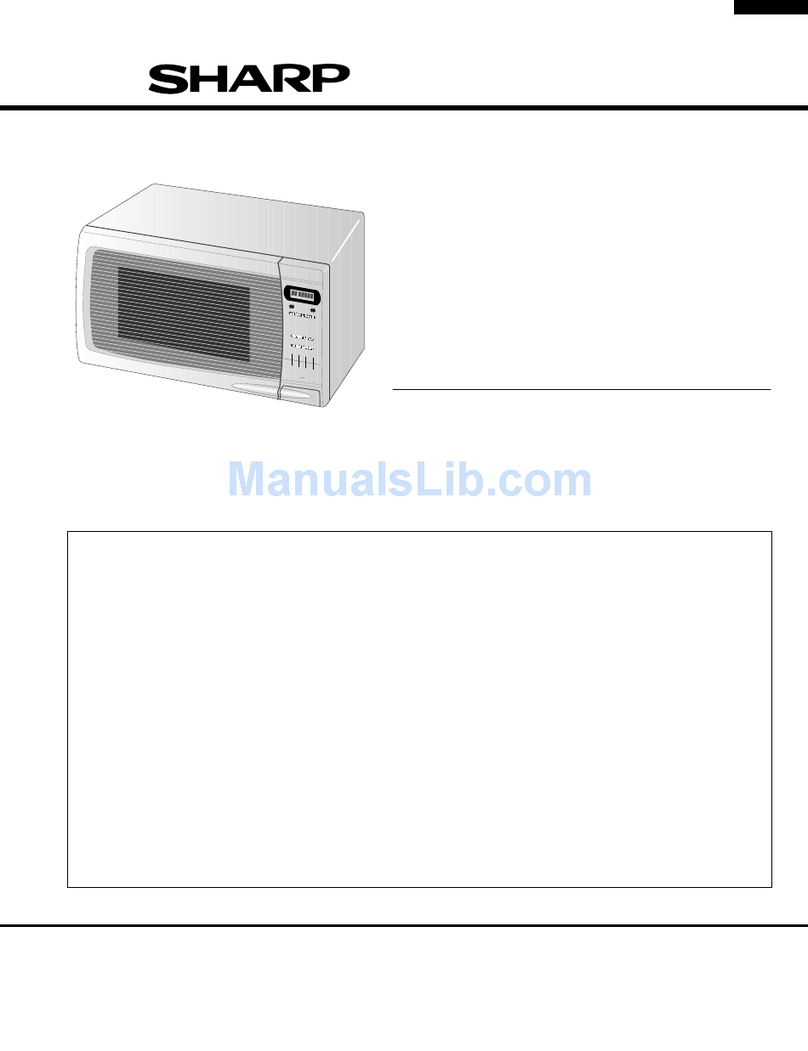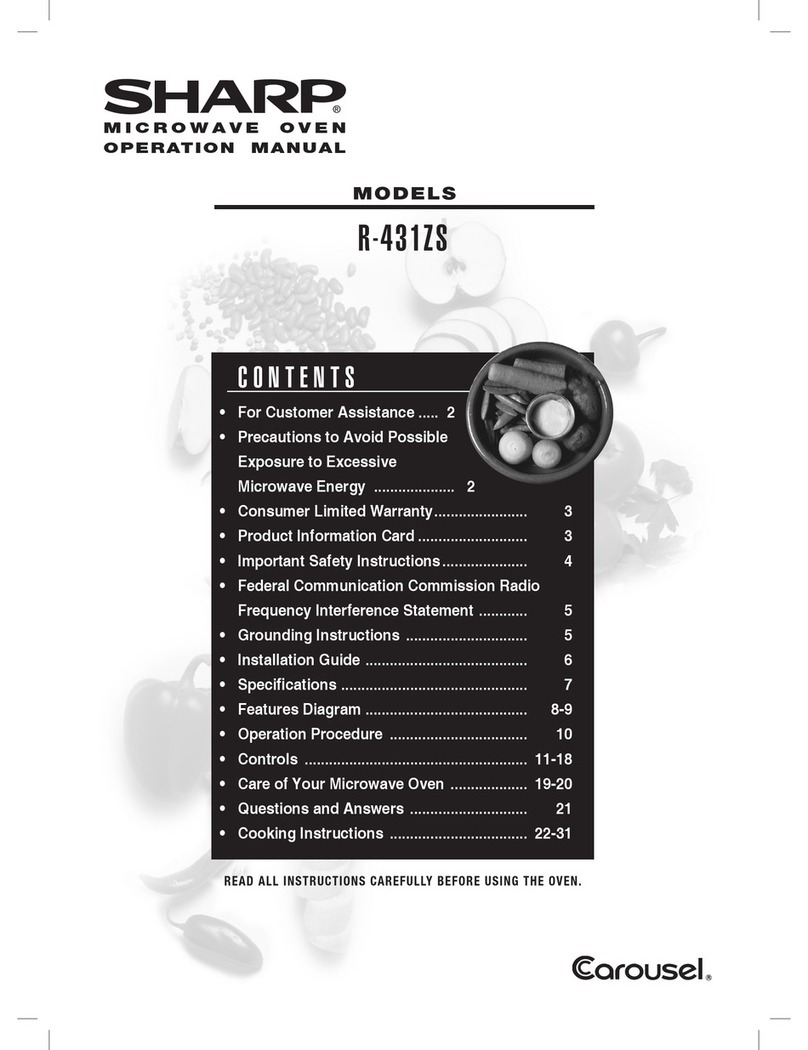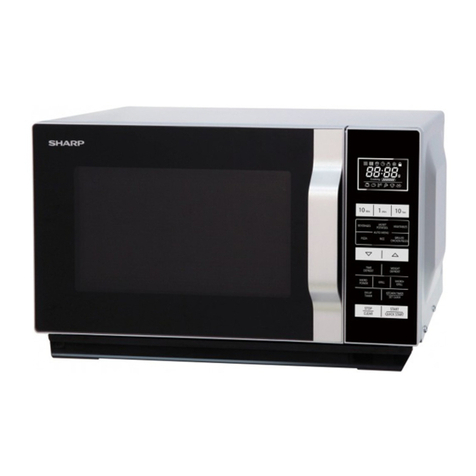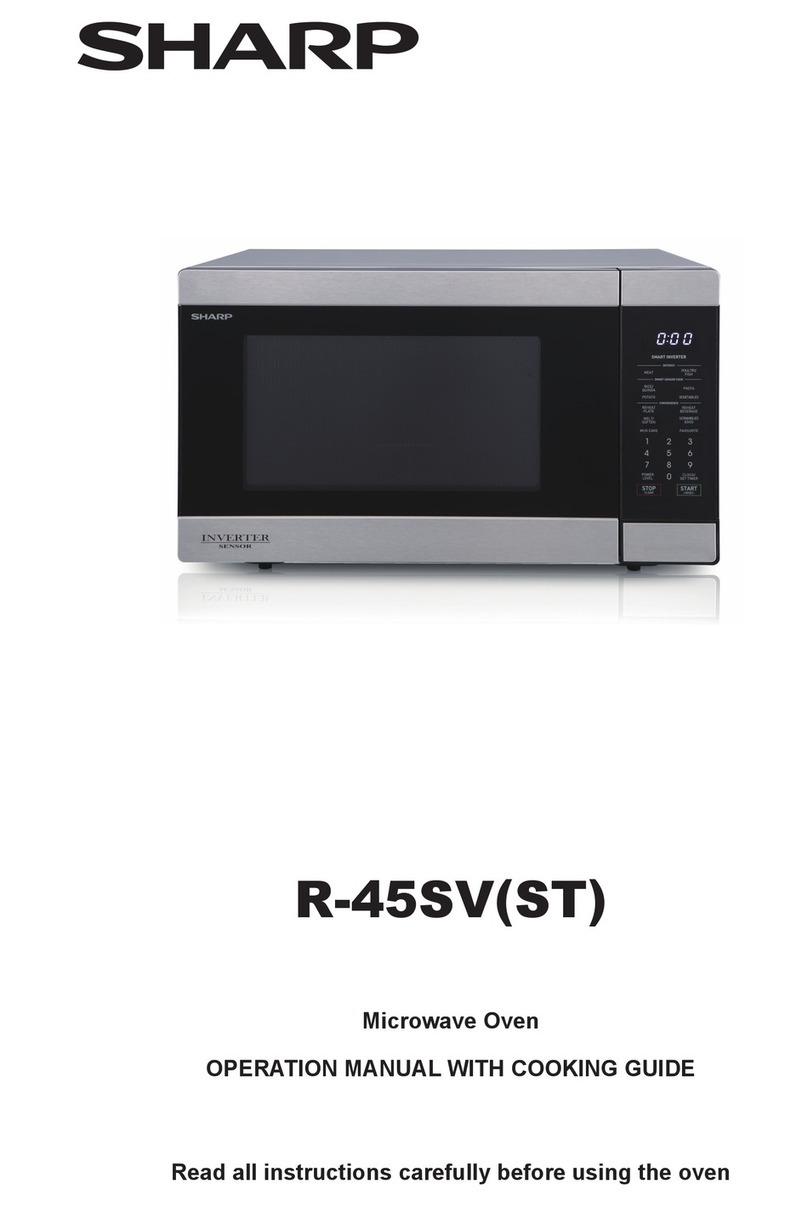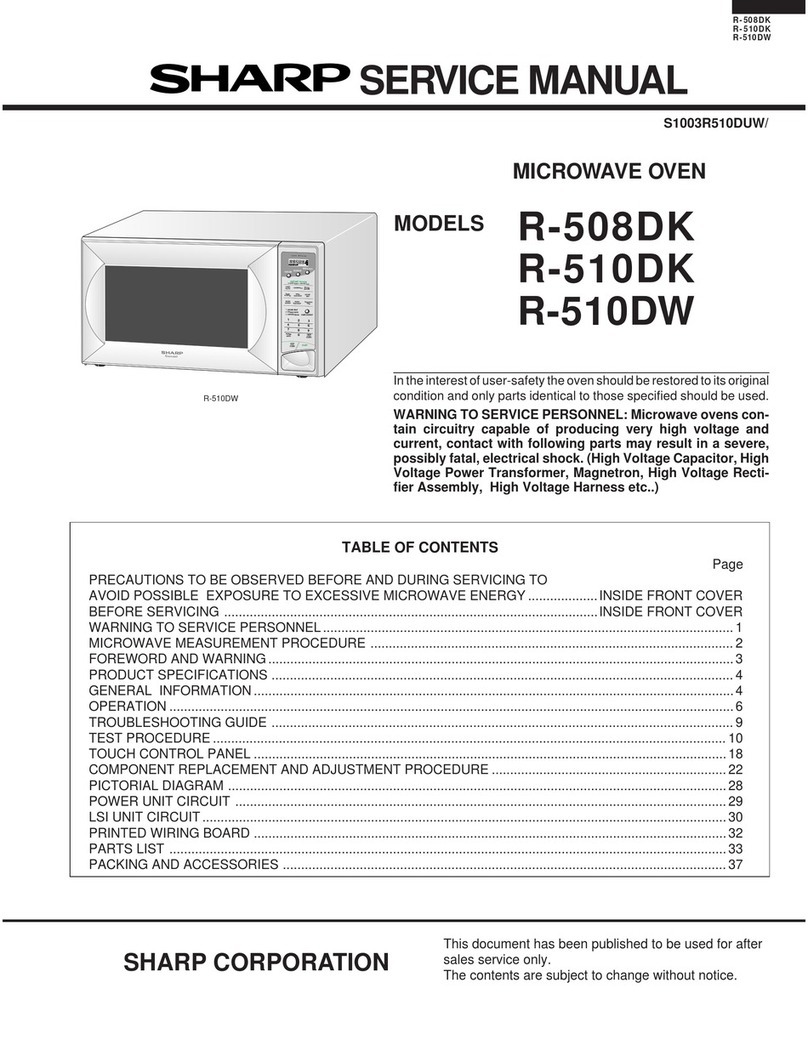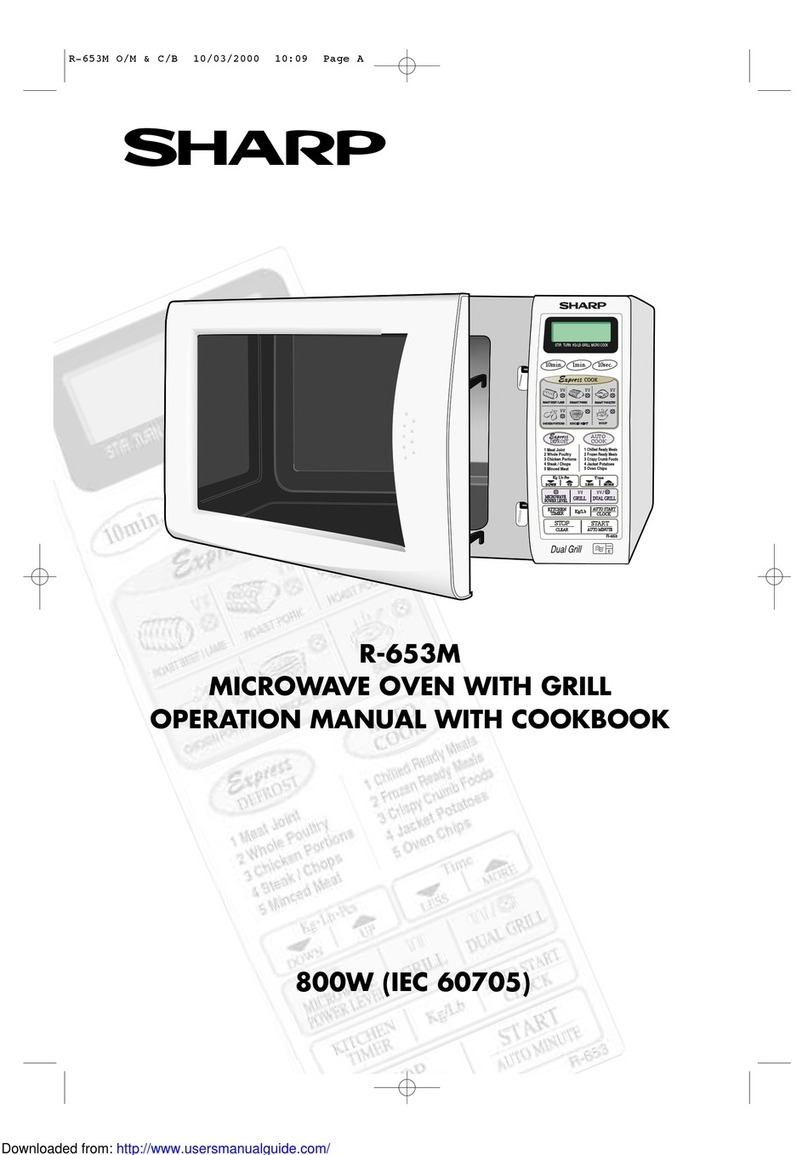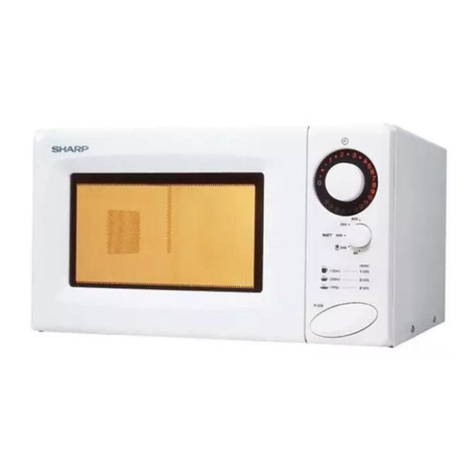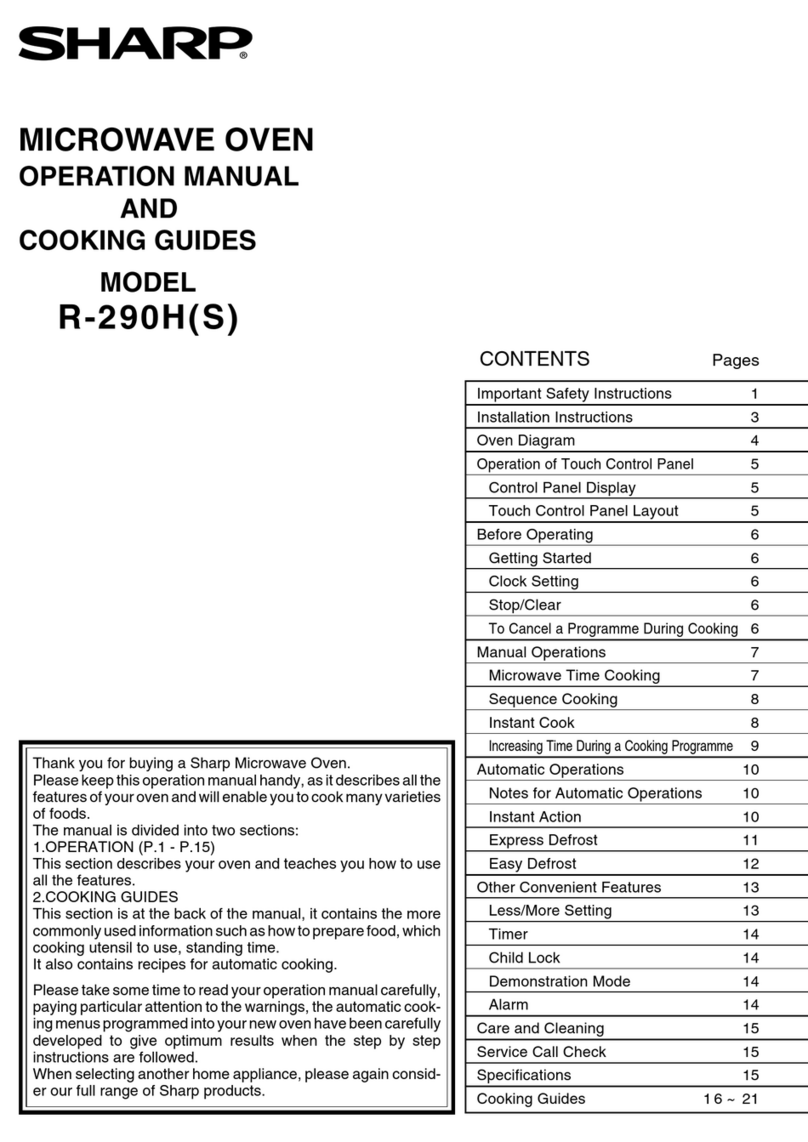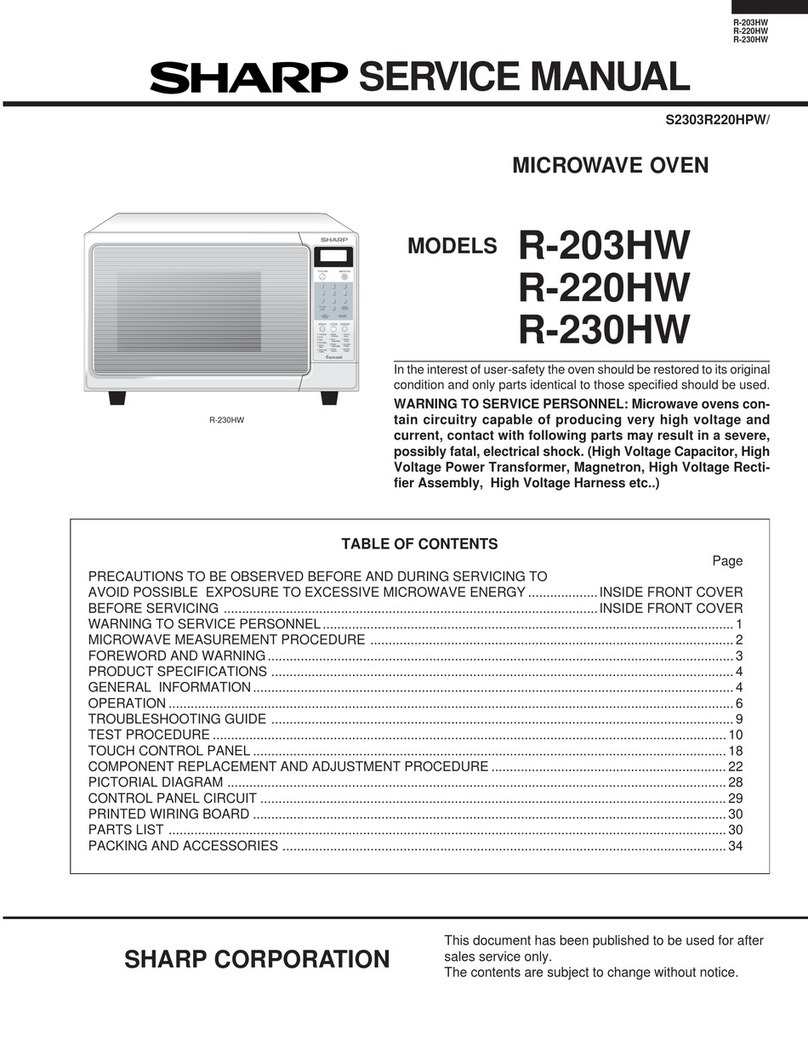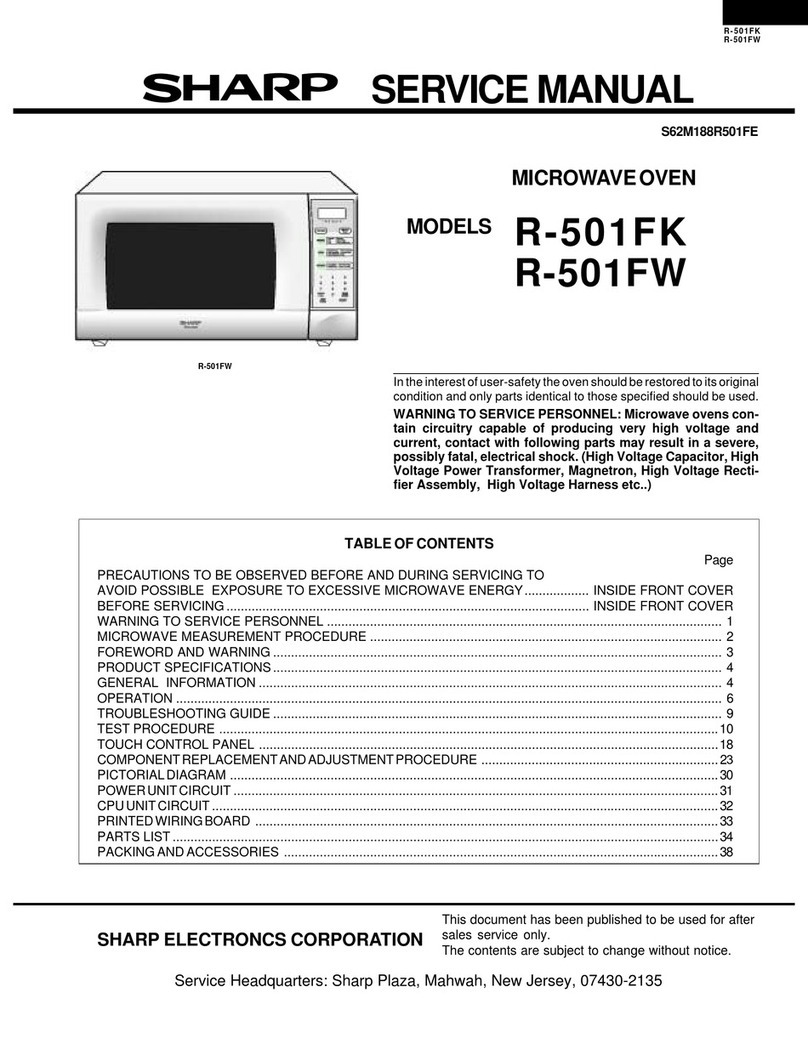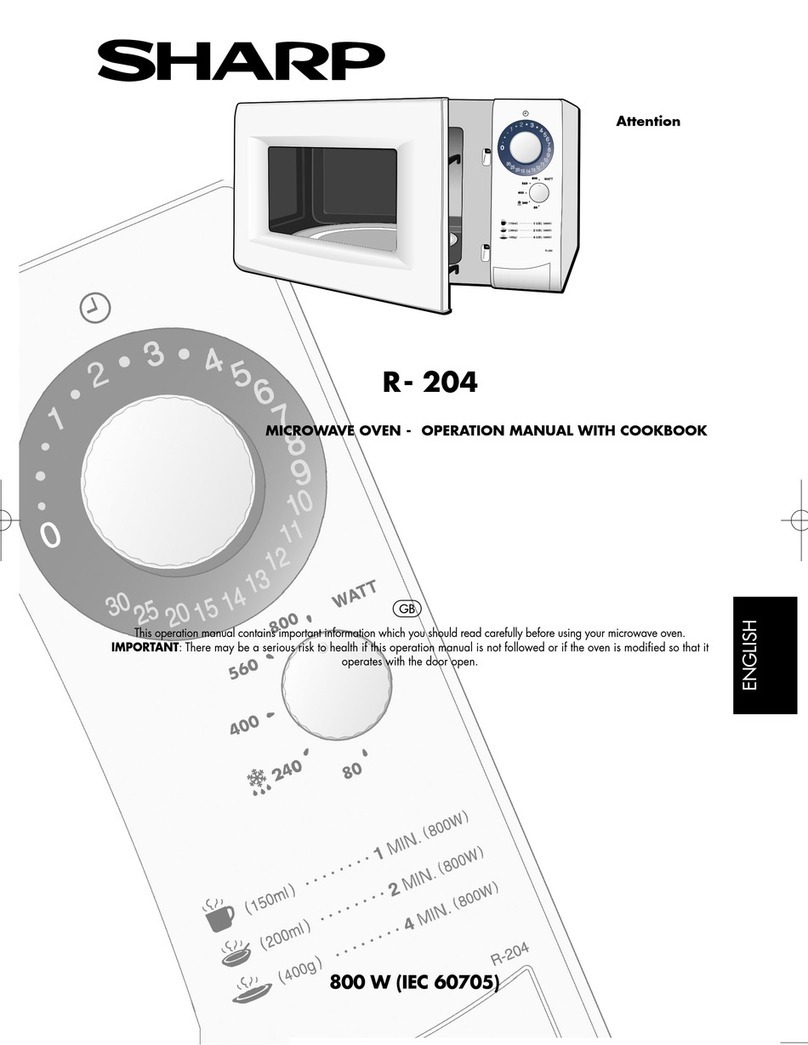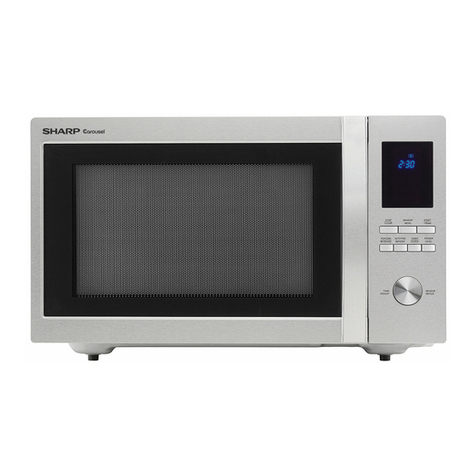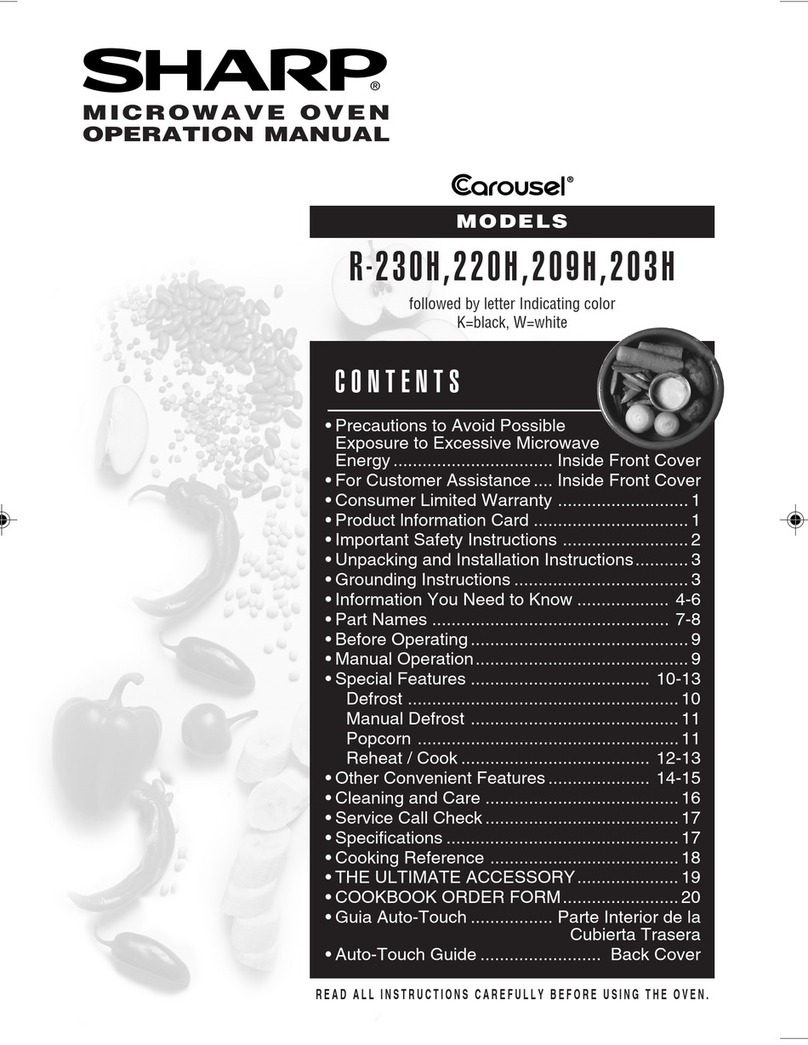R-380A
4
OPERATION SEQUENCE
OFF CONDITION
Closing the door activates all door interlock switches
(1st. latch switch, 2nd. latch switch and stop switch).
IMPORTANT
Whentheovendoorisclosed,themonitorswitchcontacts
(COM-NC) must be open.
Whenthemicrowaveovenispluggedinawalloutlet,rated
voltage is supplied to the point A3+A5 in the control unit.
Figure O-1 on page 28
1. The display shows SHARP , MICRO- , WAVE
and OVEN .
2. To set any programmes or set the clock, you must
first touch the STOP/CLEAR pad.
3. : appears in the display.
NOTE: When the oven door is opened, the oven lamp
comes on at this time.
MICROWAVE COOKING CONDITION
HIGH COOKING
Enter a desired cooking time with the touching NUMBER
pad and start the oven with touching START pad.
Function sequence
Figure O-2 on page 28
CONNECTED COMPONENTS RELAY
Oven lamp, Fan motor, Turntable motor RY1
Power transformer RY2
1. Ratedvoltage is supplied to theprimary winding of the
power transformer. The voltage is converted to about
3.3 volts A.C. output on the filament winding and high
voltage of approximately 2000 volts A.C. on the
secondary winding.
2. The filament winding voltage (3.3 volts) heats the
magnetronfilamentandthehighvoltage(2000volts)is
sent to the voltage doubling circuit, where it is doubled
to negative voltage of approximately 4000 volts D.C..
3. The 2450 MHz microwave energy produced in the
magnetron generates a wave length of 12.24 cm. This
energyischanneled throughthewaveguide (transport
channel)into theoven cavity, wherethe foodis placed
to be cooked.
4. Whenthecookingtimeisup,asignaltoneisheardand
the relays RY1+RY2 go back to their home position.
The circuits to the oven lamp, power transformer, fan
motor and turntable motor are cut off.
5. When the door is opened during a cook cycle, the
switches come to the following condition
CONDITION
DURING DOOR OPEN
SWITCH CONTACT COOKING
(NOCOOKING)
1st. latch switch COM-NO Closed Open
2nd. latch switch COM-NO Closed Open
Monitor switch COM-NC Open Closed
Stop switch COM-NO Closed Open
The circuits to the power transformer, fan motor and
turntable motor are cut off when the 1st. latch switch,
2nd.latch switch,andstop switchare madeopen.The
oven lamp remains on even if the oven door is opened
after the cooking cycle has been interrupted, because
therelayRY1 staysclosed.Shown inthedisplay isthe
remaining time.
6. MONITOR SWITCH CIRCUIT
The monitor switch is mechanically controlled by
oven door, and monitors the operation of the 1st and
2nd. latch switches.
6-1 When the oven door is opened during or after the
cycleofacookingprogram,the1st.latchswitch,2nd.
latchswitchand stopswitchmustopen theircontacts
first.
After that the contacts (COM-NC) of the monitor
switch can be closed.
6-2. When the oven door is closed, the contacts (COM-
NC) of the monitor switch must be opened. After that
thecontacts of the 1st. latchswitch, 2nd. latch switch
and stop switch are closed.
6-3. When the oven door is opened and the contacts of
the1st. latch switch, 2nd. latch switch remain closed.
The fuse M8A will blow, because the monitor switch
is closed and a short circuit is caused.
MEDIUM HIGH, MEDIUM, MEDIUM LOW, LOW
COOKING
When the microwave oven is preset for variable cooking
power, 230-240 volts A.C. power is supplied to the power
transformer intermittently within a 32-second time base
through the relay contact which is coupled with the cur-
rent-limitingrelay.Thefollowinglevelsofmicrowavepower
are given.
SETTING; 32 sec. ON
24 sec. ON
18 sec. ON
12 sec. ON
6 sec. ON
8 sec. OFF
14 sec. OFF
20 sec. OFF
26 sec. OFF
HIGH
MEDIUM HIGH
MEDIUM
MEDIUM LOW
LOW
Approx. 70%
Approx. 50%
Approx. 30%
Approx. 10%
NOTE: TheON/OFFtimeratiodoesnotexactlycorrespond
to the percentage of microwave power, because
approx. 2 seconds are needed for heating up the
magnetron filament.
SENSOR COOKING CONDITION
Using the SENSOR COOK or SENSOR INSTANT RE-
HEAT function, the foods are cooked or reheated without
figuring time, power level or quantity. When the oven
senses enough steam from the food, it relays the informa-
tiontoitsmicroprocessorwhichwillcalculatetheremaining
cooking time and power level needed for best results.
When the food is cooked, water vapor is developed. The
sensor “senses” the vapor and its resistance increases
gradually. When the resistance reaches the value set
according to the menu, supplementary cooking is started.
The time of supplementary cooking is determined by ex-
perimentwitheachfoodcategoryand inputtedintotheLSI.

